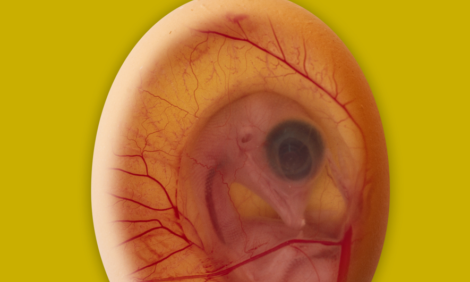



Field Experiences for Effective Control of the Gumboro Disease. Economic Impact on the Poultry Production
GLOBAL - Since the first report of the avian nephrosis syndrome completed in 1957 in Gumboro (Cosgrove, 1962) and the later outbreak that generated great economic losses in 1962 in Delaware (USA) for the first time the Infectious Bursa Disease virus was isolated (Winterfield, 1962).This pathology presents a worldwide distribution reaching all the corners of the planet. Since 1967, the use of vaccines for the control of this entity has been the tool that allowed its control in the first decades, however this condition was compromised with the new virus variants of the Infectious Bursa Disease (IBDV) (Jackwood, 1987) (Snyder, 1992) which were isolated in the farms in the Delmarva zone (Snyder D. L., 1988). These variants have the particular condition that they break the maternal immunity barrier when the classic vaccines are used in breeders, condition that generates bursa atrophy in very early ages. Additionally, the disease gave a surprise in the 80’s with the occurrence of very virulent strains in Europe and Asia characterized by causing high mortality in the affected flocks (Van den Berg, 1991). Additional molecular epidemiology assessments performed in samples sent from Latin America between 2001 and 2011 have proven the evidence of the recombination of variant and classic strains in the amino acid sequence of the VP2 protein (Jackwood D. , 2012).
In Colombia, as well as, in all the planet we had to learn about the control of the Gumboro disease, initially before the presence and later the management with the variant particles and the very virulent strains that still represent a challenge in chicken production, that today represents more than 757 million housed birds in 2016. Macpollo, is the leader company with about 17% of the total production. In 2006, the problems related with the difficulty in control of IBD were evident in Colombia and it was necessary to work deeper in diagnostics. The University of Georgia performed some virus characterizations found in the affected bird samples where the findings of variant and very virulent strains were evident. The vaccination plans were not working and the aggression in the bursa generated by the more aggressive vaccines in the search of protection, was generating different grades of inmunosuppression which resulted in production problems.
By 2008, in Colombia the use of a Gumboro recombinant vaccine was available. This vaccine protects simultaneously against the IBD and Marek’s disease in which the recombination of the virus was made and as an additional benefit the protection to keep the integrity of the bursa, not requiring additional the lymphocyte replication to generate immunity. It was like this since 2008 when Macpollo, started to use it in broilers with satisfactory results by using a single dose in the hatchery; later, in 2009, with the assessment in the protection they started to use it in breeders complementing it with the applications with an oily vaccine in breeders to help the transmission of titers to the progeny. Up to this moment, they have vaccinated more than 770 million chicks and 5.2 million breeders with very favorable results and an evident protection in the presence of the field virus proven by the ELISA titers at slaughter, with good zoothecnical results and convenient plant condemnations for the company.
In conclusion, Colombia is an endemic country for the Gumboro disease with the classic virus, variants and very virulent strains circulation. The control of IBD in broilers is possible through the use of recombinant vaccines with protection against the very virulent virus and variants as well. Additionally, its use in breeders along the complementary application of oily vaccines that generate protection against the disease and an adequate and sustained antibody transfer to the progeny. Finally, the ELISA tests used in the tracking of the protection transfer by the breeders and the titers at the slaughter in broilers are important tools for tracking the behavior of the disease in the production units.
BIBLIOGRAPHY
- Cosgrove, A. (1962). “An apparently new disease of chickens-avian nephrosis”. Avian Disease(6), 385-389.
- Jackwood, D. (Sep de 2012). Molecular epidemiologic evidence of homologous recombination in infectious bursal disease viruses.
- Avian Diseases, 56(3), 574-577.
- Jackwood, D. J. (1987). “Antigenic diversity of infectious bursal disease. Avian Diseases, 31, 766-760.
- Snyder, D. L. (1988). “Differentiation of infectious bursal disease viruses directly from infected. Avian Diseases, 32, 535-539.
- Snyder, D. V. (1992). “Naturally occurring-neutralizing. Archives of Virology, 127, 89-101.
- Van den Berg, T. P. (1991). “Acute infectious bursal disease virus in poultry: isolation and characterization of a highly virulent strains”. Avian Pathology, 20, 133-143.
- Winterfield, R. H. (1962). “Avian nephrosis, nephritis and Gumboro disease”. L&M News Views(3), 103.
Dr. Leonardo Cotamo








